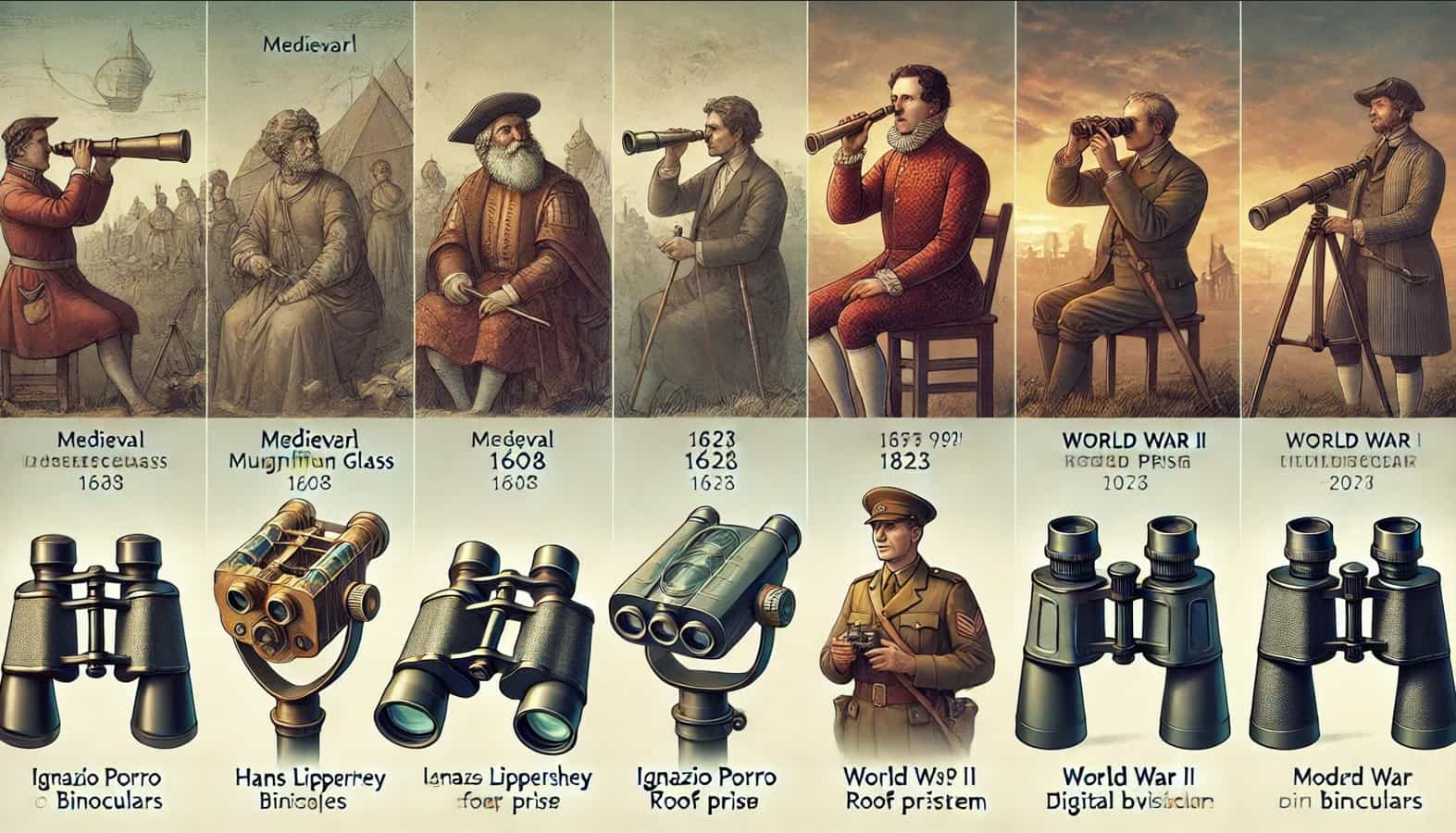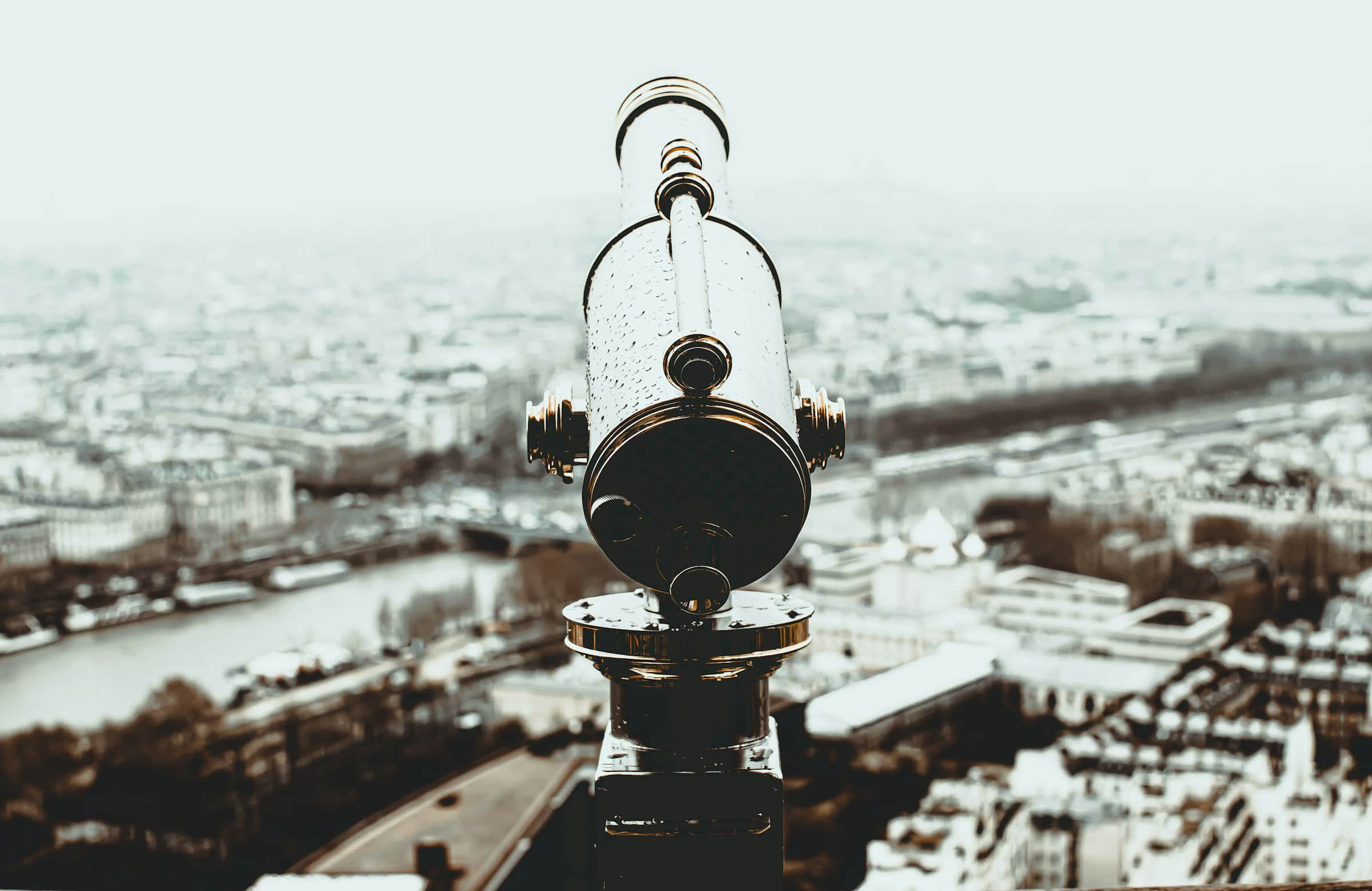The history of binoculars is a fascinating journey through centuries of innovation in optical technology. From their early conceptual stages to modern high-tech designs, binoculars have played a crucial role in exploration, warfare, and scientific discoveries. This article delves into the history of binoculars, answering important questions such as when were binoculars invented, why were binoculars invented, and who invented binoculars. We will also explore the history of binoculars timeline and how early field magnifying glasses contributed to their development.
The Origins: Early Optical Devices
Before the invention of binoculars, magnifying tools such as the field magnifying glass and simple lenses were widely used for viewing distant objects. These early optical devices laid the groundwork for the development of telescopes and, eventually, binoculars.
Who Invented Binoculars?
While there is no single inventor credited with the creation of binoculars, the concept evolved from early telescopes. The first known patent for a binocular device was granted in 1608 to Hans Lippershey, a Dutch optician. Lippershey is often credited with the invention of the telescope, but his idea also paved the way for binocular vision.
When Were Binoculars First Invented?
The transition from a single telescope to a binocular design occurred in the 17th century, but the first functional binoculars came later. In 1823, Italian optician Ignazio Porro developed the Porro prism system, which significantly improved image quality and depth perception. His design became the foundation for modern binoculars.
Why Were Binoculars Invented?
The primary motivation behind the invention of binoculars was to provide stereoscopic vision, allowing users to perceive depth and a wider field of view compared to a single telescope. This was especially useful in:
- Military applications – Enhancing battlefield visibility
- Navigation and exploration – Assisting sailors and adventurers
- Scientific research – Aiding astronomers and naturalists
- Sporting and entertainment – Improving the viewing experience at events
The History of Binoculars Timeline

1608: The Telescope and Early Concepts
- Hans Lippershey patents the first telescope.
- Galileo Galilei improves the design and uses it for astronomical observations.
1700s: Experimentation with Dual Lenses
- Optical scientists attempt to create dual-lens telescopes for better vision.
1823: The Porro Prism Revolution
- Ignazio Porro develops the Porro prism system, which enhances image clarity and depth.
Late 1800s: Introduction of Roof Prism Binoculars
- The roof prism design emerges, offering a more compact and lightweight alternative to the Porro prism.
Early 1900s: Military Adoption
- Binoculars become a standard tool in World War I and World War II.
- Major manufacturers like Zeiss and Leitz improve optical coatings for better performance.
Mid-1900s: Technological Refinements
- Anti-reflective coatings are introduced, reducing glare and enhancing clarity.
- Lightweight and waterproof binoculars become available.
2000s–Present: Digital and Smart Features
- Night vision and range-finding technologies are integrated.
- Digital binoculars with recording capabilities are developed.
- Advances in field magnifying glass technology contribute to high-powered optics.
Modern Binoculars: Where Are We Now?
Today, binoculars are more advanced than ever. With improvements in lens coatings, materials, and digital enhancements, modern binoculars cater to diverse needs, including birdwatching, stargazing, and military applications. The development of field magnifying glasses and augmented reality (AR) is further shaping the future of optical technology.
Conclusion
The history of binoculars is a testament to human ingenuity in optical science. From their humble beginnings as adaptations of telescopes to modern high-tech devices, binoculars continue to be an essential tool across various fields. Whether you’re a nature enthusiast, a historian, or simply curious about technological evolution, understanding the history of binoculars timeline offers a deeper appreciation for this incredible invention.
Frequently Asked Questions
Why was binoculars invented?
Binoculars were invented to provide stereoscopic vision, allowing users to see distant objects with depth and a wider field of view, which was not possible with a single telescope.
When was the first binocular?
The first functional binoculars were developed in 1823 by Italian optician Ignazio Porro, who introduced the Porro prism system to enhance image clarity.
What were old binoculars called?
Early binoculars were often referred to as field glasses or opera glasses, depending on their usage. The term "field magnifying glass" was also used for some early optical instruments.

